By Catarina Pien
Two weeks ago, my fellow labmate Jessica Jang and I headed to Newport, Oregon to learn how to survive the high seas in preparation for some trawls in which we will be participating later on this year. The FRAMD trawls (Fishery Resource Analysis and Monitoring Divison), associated with NOAA Fisheries, survey groundfish along the Western US coast, collecting age (using otoliths), sex, and length information on 90 groundfish species, as well as more limited information on other species collected in trawls, and more detailed information for scientists conducting special projects. Students in our lab (Pacific Shark Research Center) have, in the past, gathered specimens and data from these trawls for their thesis projects, and both Jessica and I are hoping to collect specimens for our own theses.
We arrived in Portland, and first made a pitstop to obtain some good food and the famed Voodoo Donuts. At the time, I didn't realize I would be eating donuts nonstop for the next 4 days. We then drove to Newport, only getting lost a few times...
The next day, we started off the day with some extreme videos of ships crashing and sinking, then had some lectures about safety, which emphasized the main objective of the course: develop the will to survive! Being prepared for the situation, being able to stay calm and respond efficiently to any circumstances that might arise, and knowing when to abandon ship would strongly enhance our chance of survival.
Next, we went outside, where the Coast Guard taught us about the balance and period of a ship's roll, and then showed us how to pump water out of a boat in the case of a flood. We took turns in their special training trailer, which was filled with leaky pipes and crevices that would begin spouting water at any given moment. I was Captain of my boat, and gave the Mayday! call to the Coast Guard while communicating with my crew members, whose job it was to plug the leaks with rubber wrapping, pieces of neoprene, and variably-shaped wooden wedges.
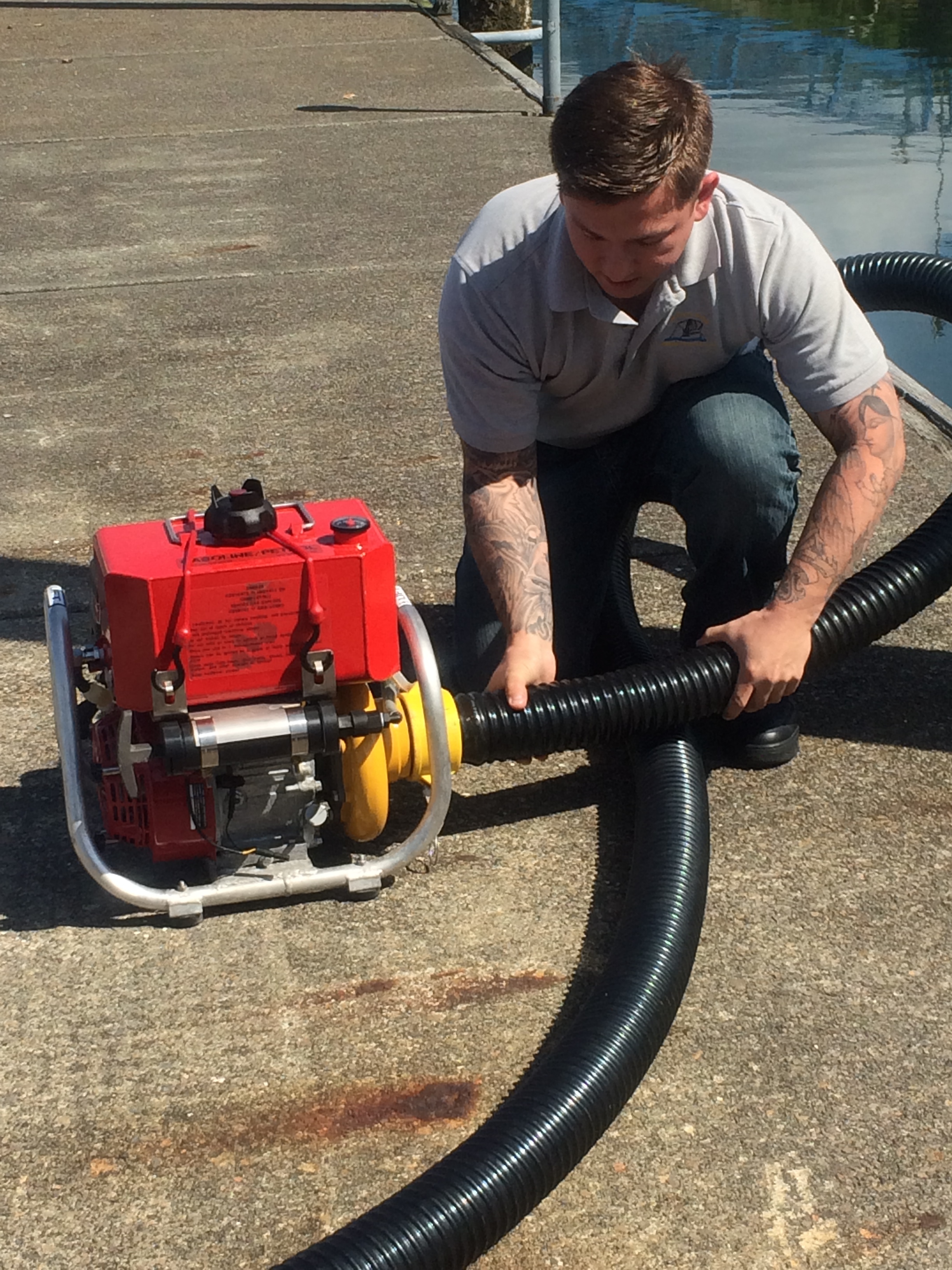
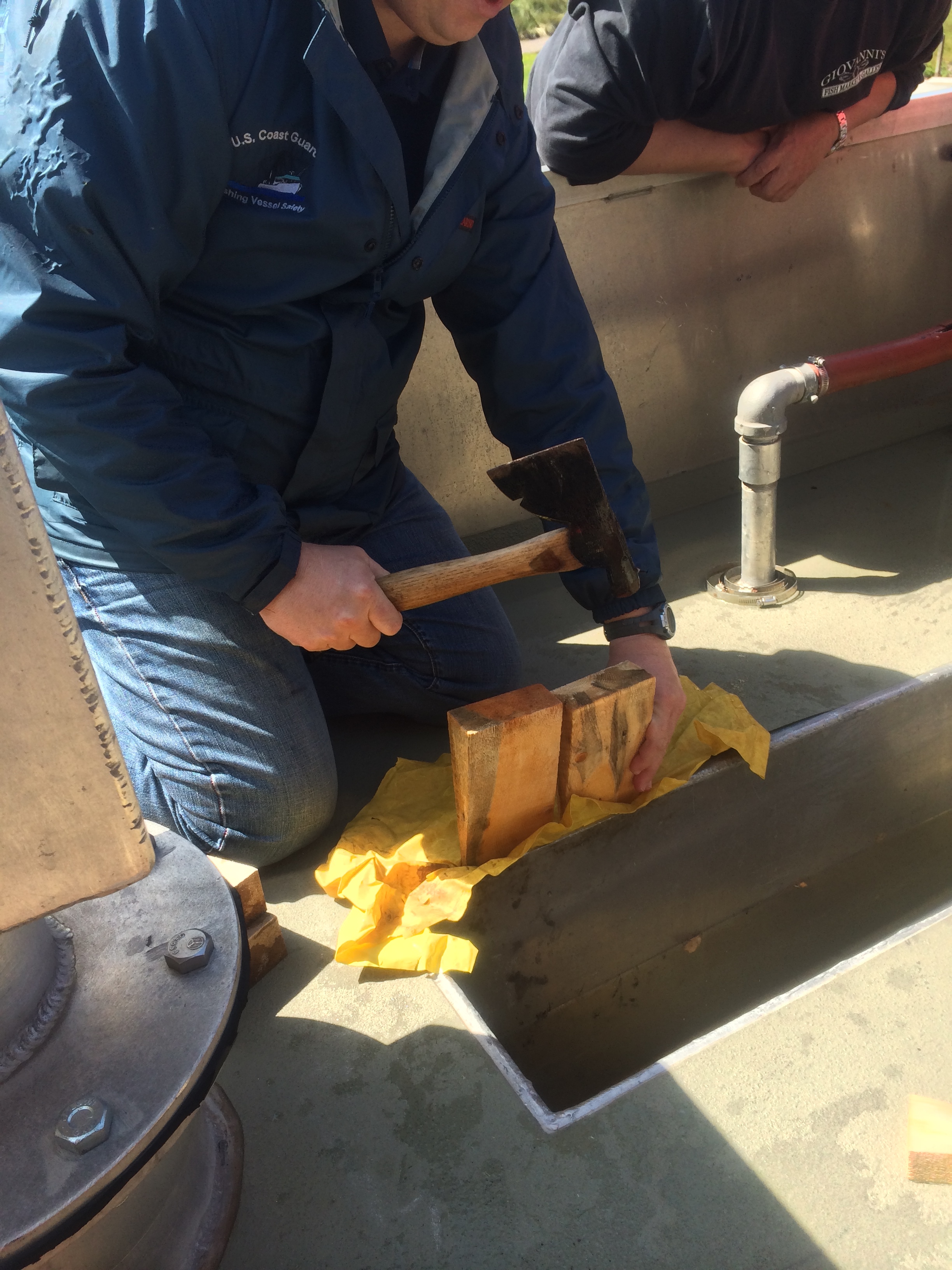
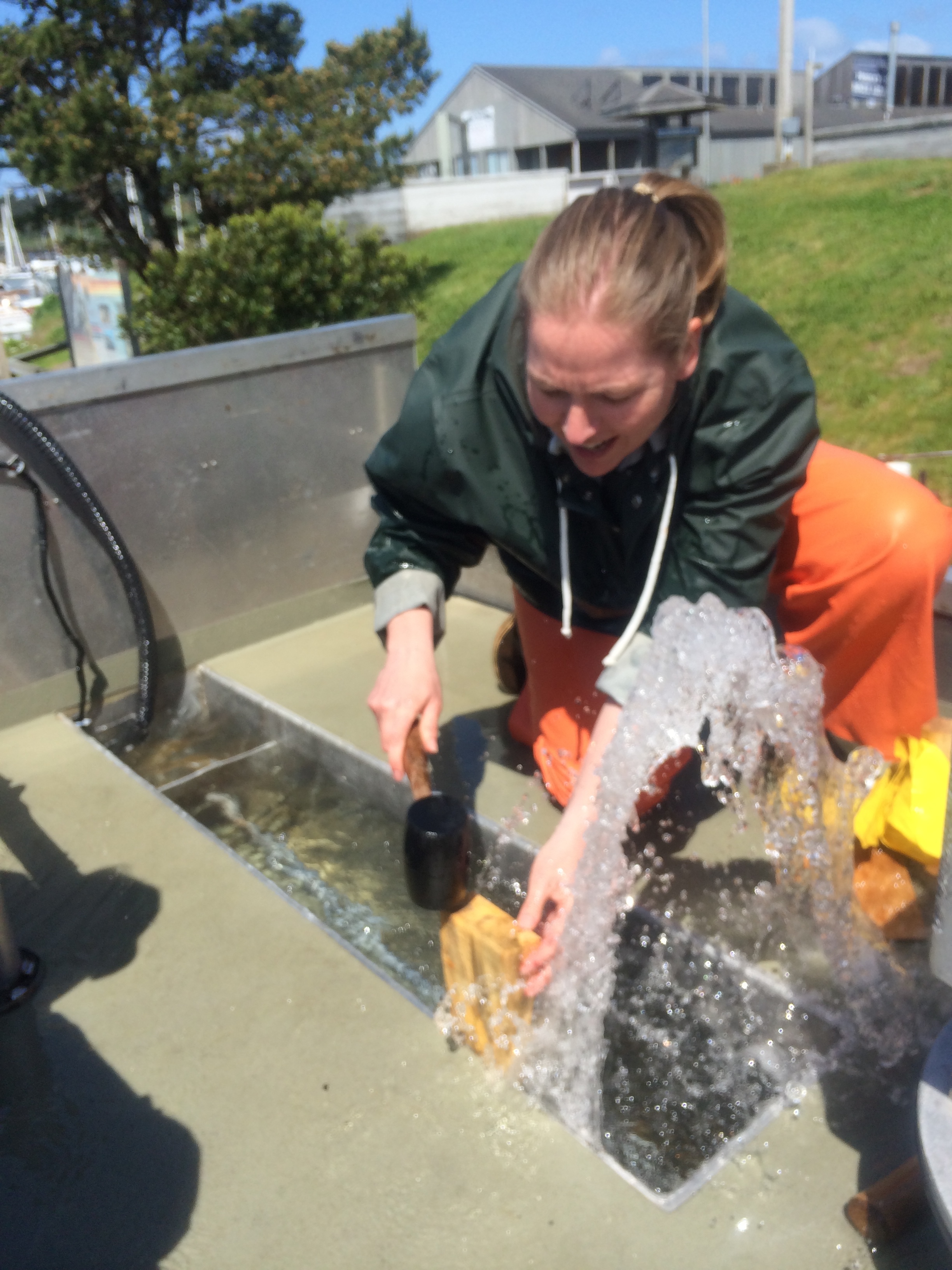
Later that day, we took our only test - unwrap and don our immersion (or survival, or gumby) suits within 60-seconds, which required multiple rounds of practice. The hardest part was doing anything that required fine motor skills (like zipping up the suit) with your fingers in a giant inflexible glove/ mitten. Some of us also tried the 60-s test in darkness, which was a whole other challenge. Although I wasn't the suit's biggest fan during the training, I came to appreciate it when we entered the water in our suits the next day (really toasty and kept me dry!), and understood how important it would be in the case of an actual sea emergency.
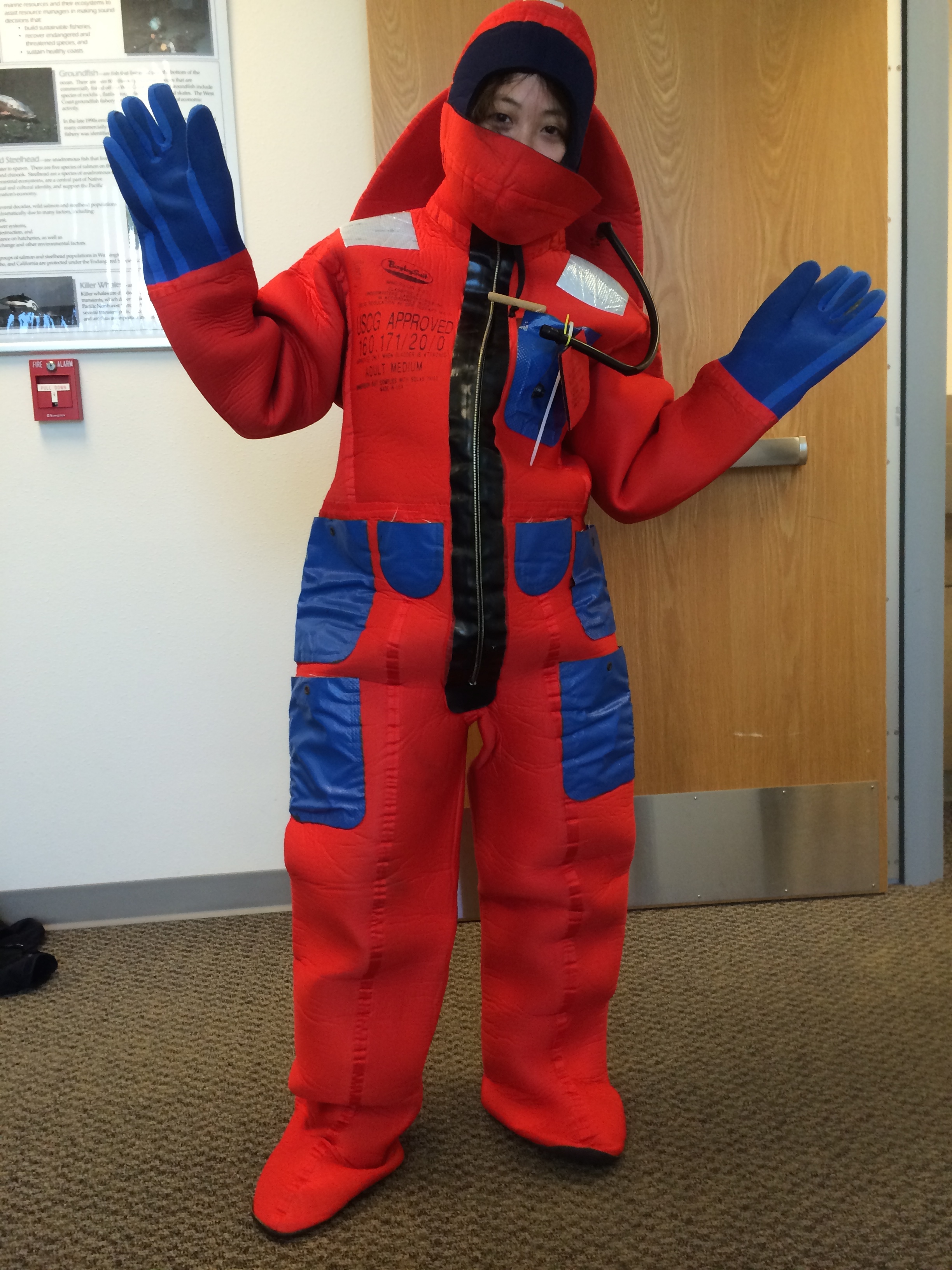
Later in the day we put out some fires (set on a grill), learning to work in a team and stay low to the ground, and tested some expired signal flares, one of which lit up the sky with orange smoke.
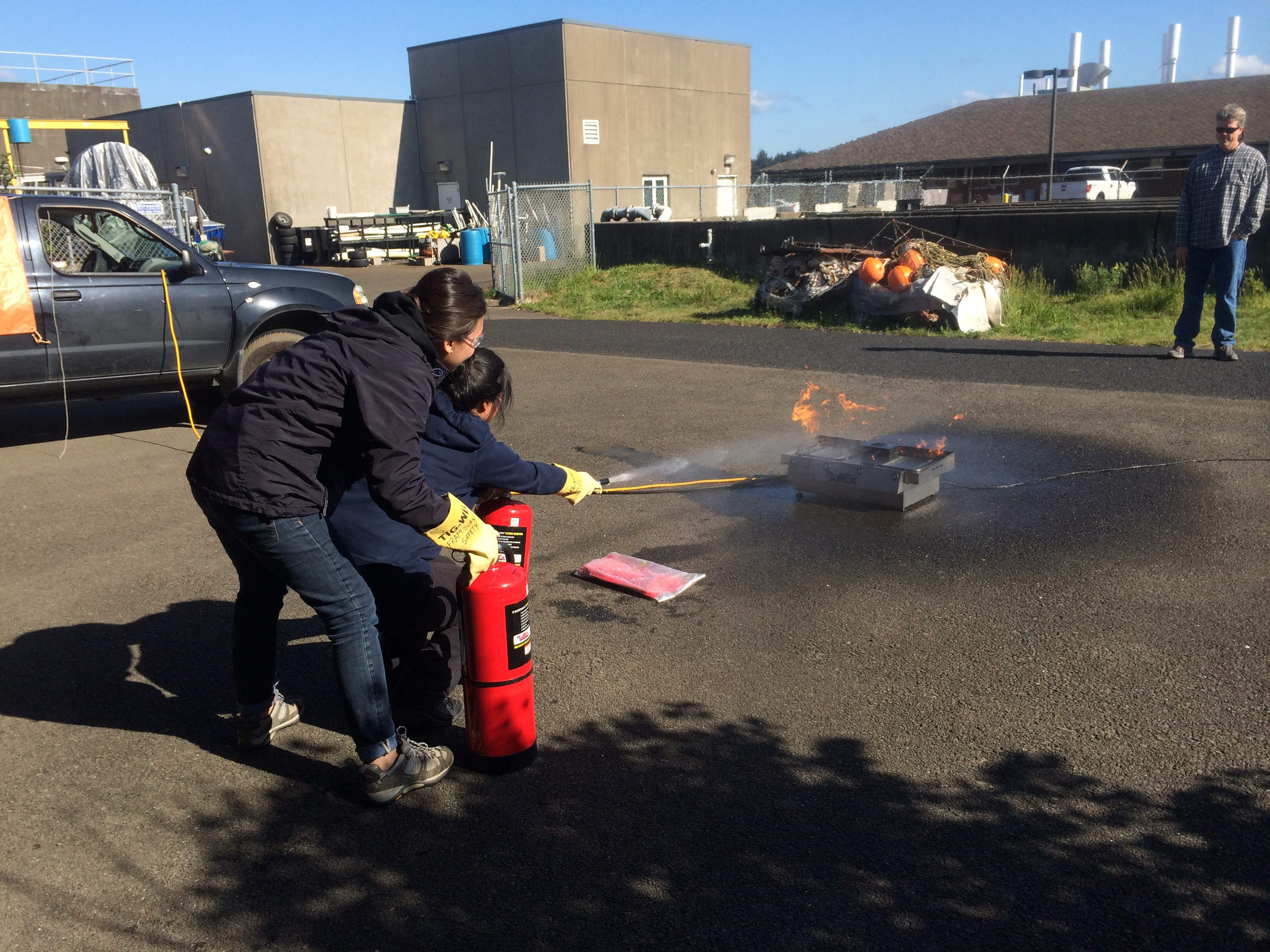
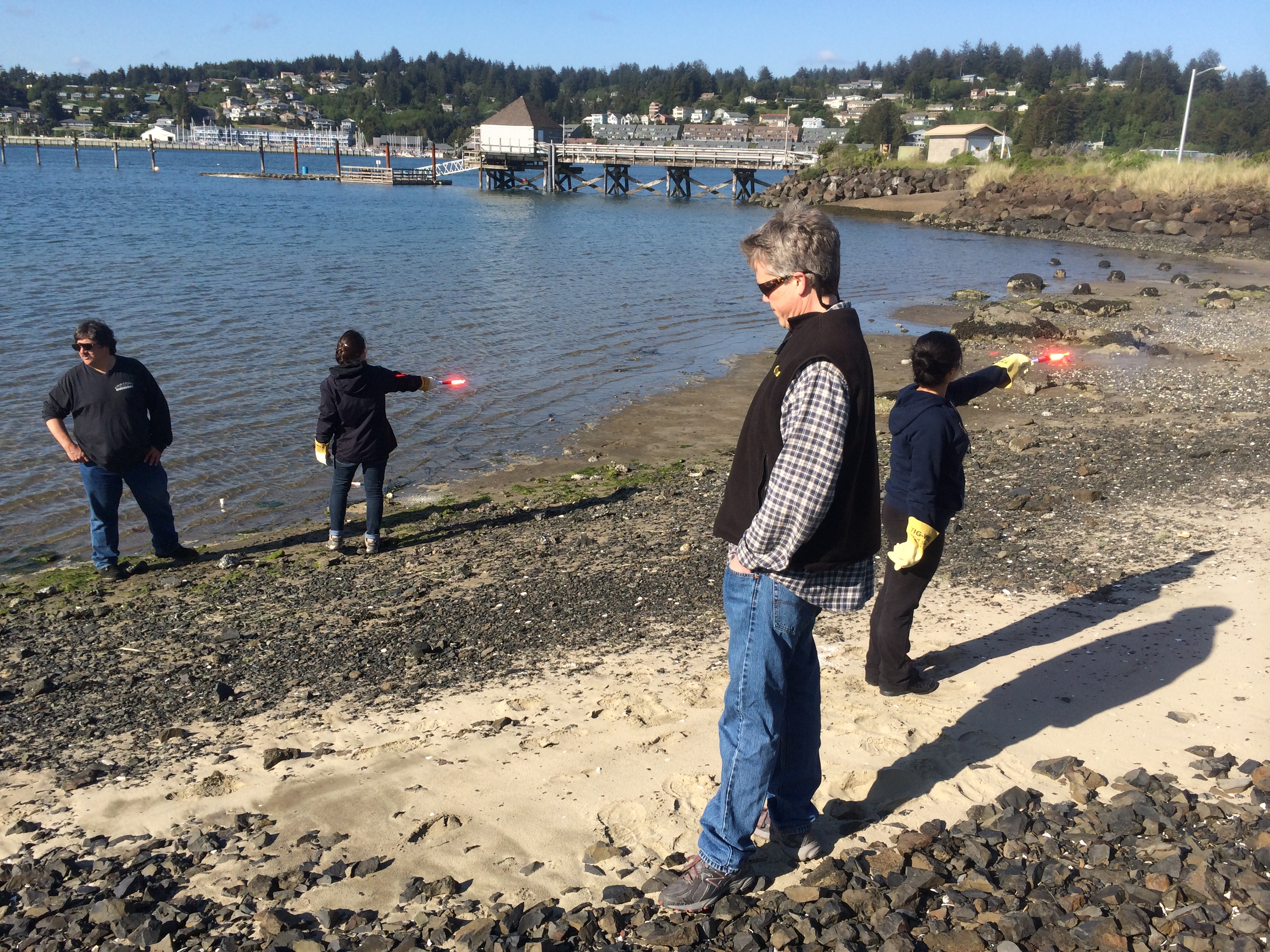
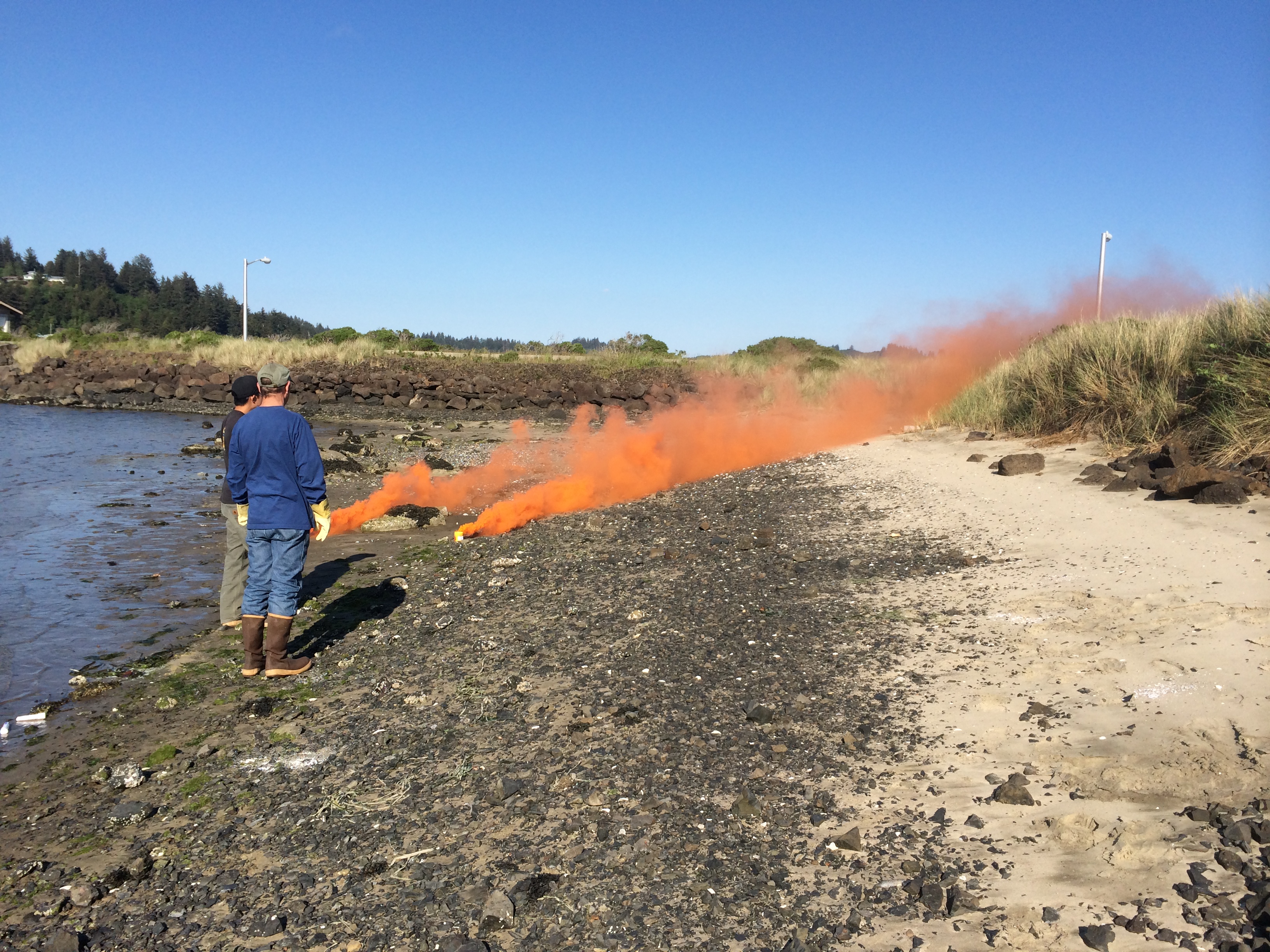
The following day, we had some role-playing drills, one person in each group being selected to fall overboard, while the other teammates worked on communicating with the Captain, Coast Guard, and each other to make sure the person was safely rescued. A second drill started out with a fire (which was hidden somewhere, represented by a glowstick, and simulated with a smoke machine), and quickly escalated into an abandon ship procedure. We had to grab the EPIRB (Emergency Position Indicating Radio Beacon, which is one of the most important pieces of equipment during an emergency, sending a signal to the Coast Guard alerting them of its position), a box of signal flares, and deploy the life raft, then hop into a demonstration raft.
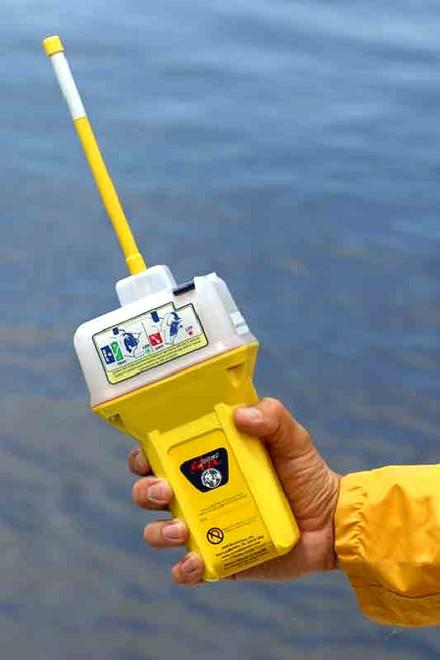
(http://www.outdoorlife.com/photos/outdoorlife/photos/2009/03/epirb)
The gap between the ship and water was substantial - but somehow everyone succeeded! Unfortunately, I lost both my team's EPIRB and flares when I turned my back on them to get into my survival suit and a "rogue wave" (aka Dan, one of our instructors) swept them away. Both our teams got Bs for the day, but we did successfully get off the ship and "survive"!
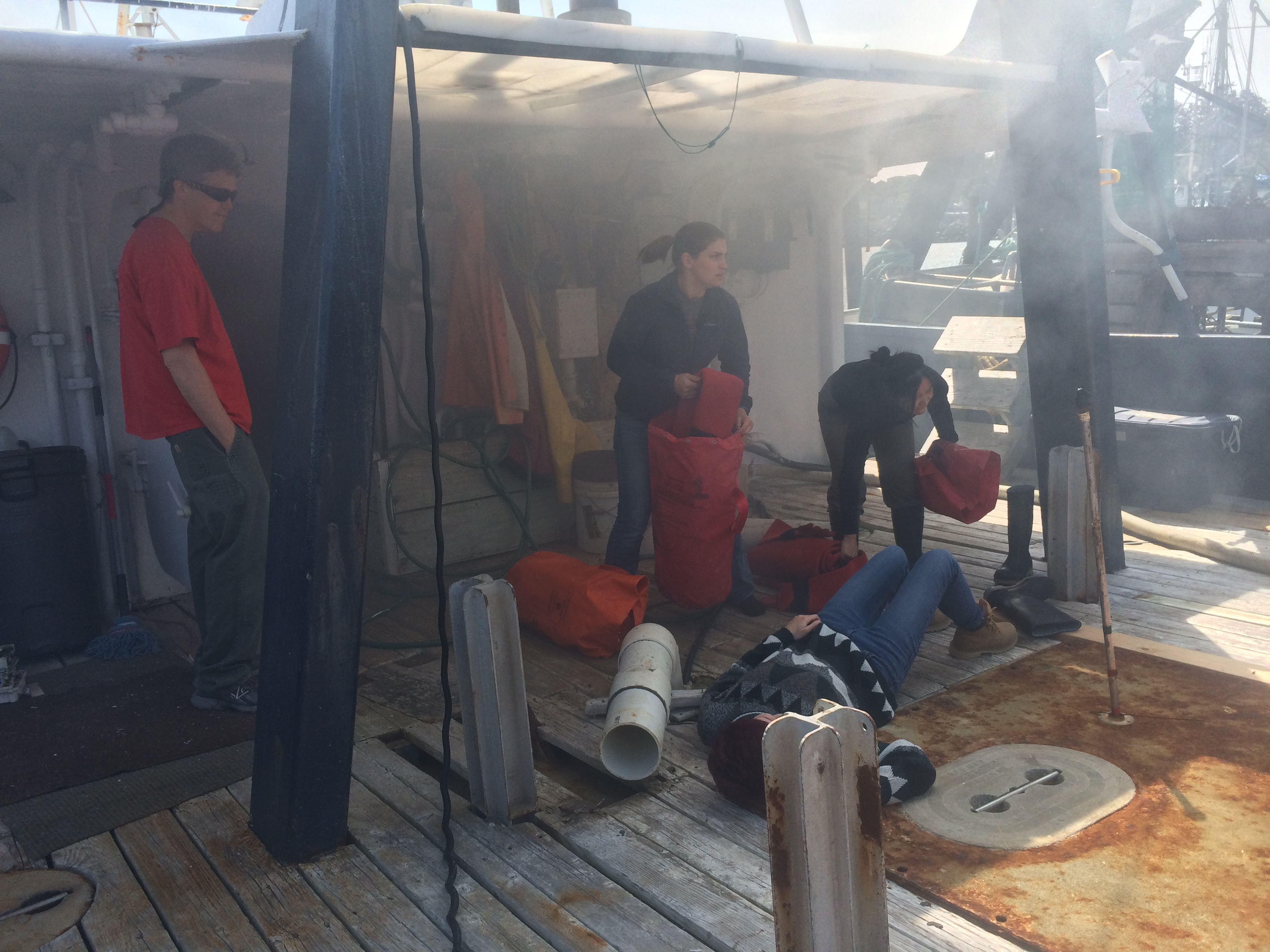
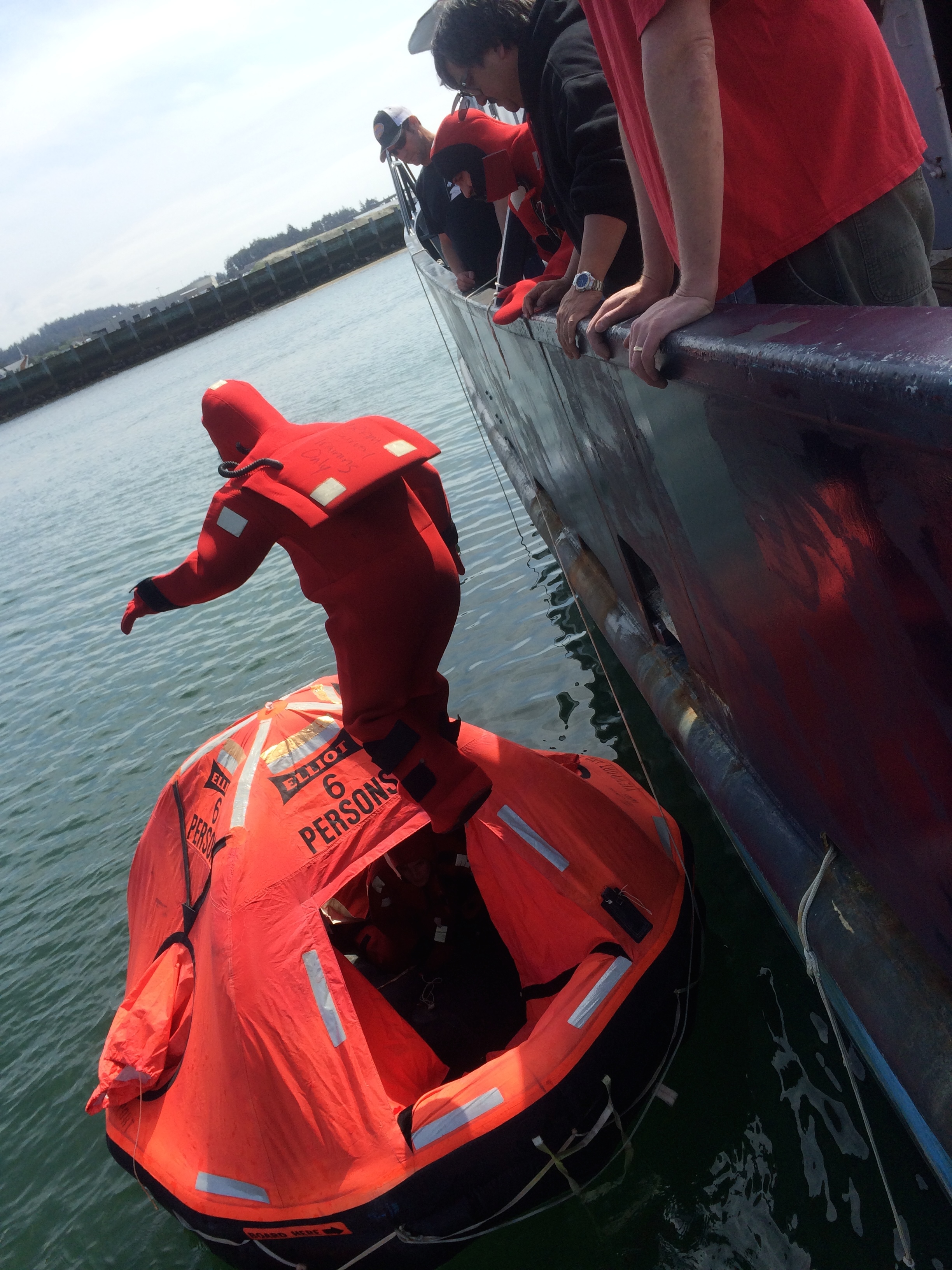
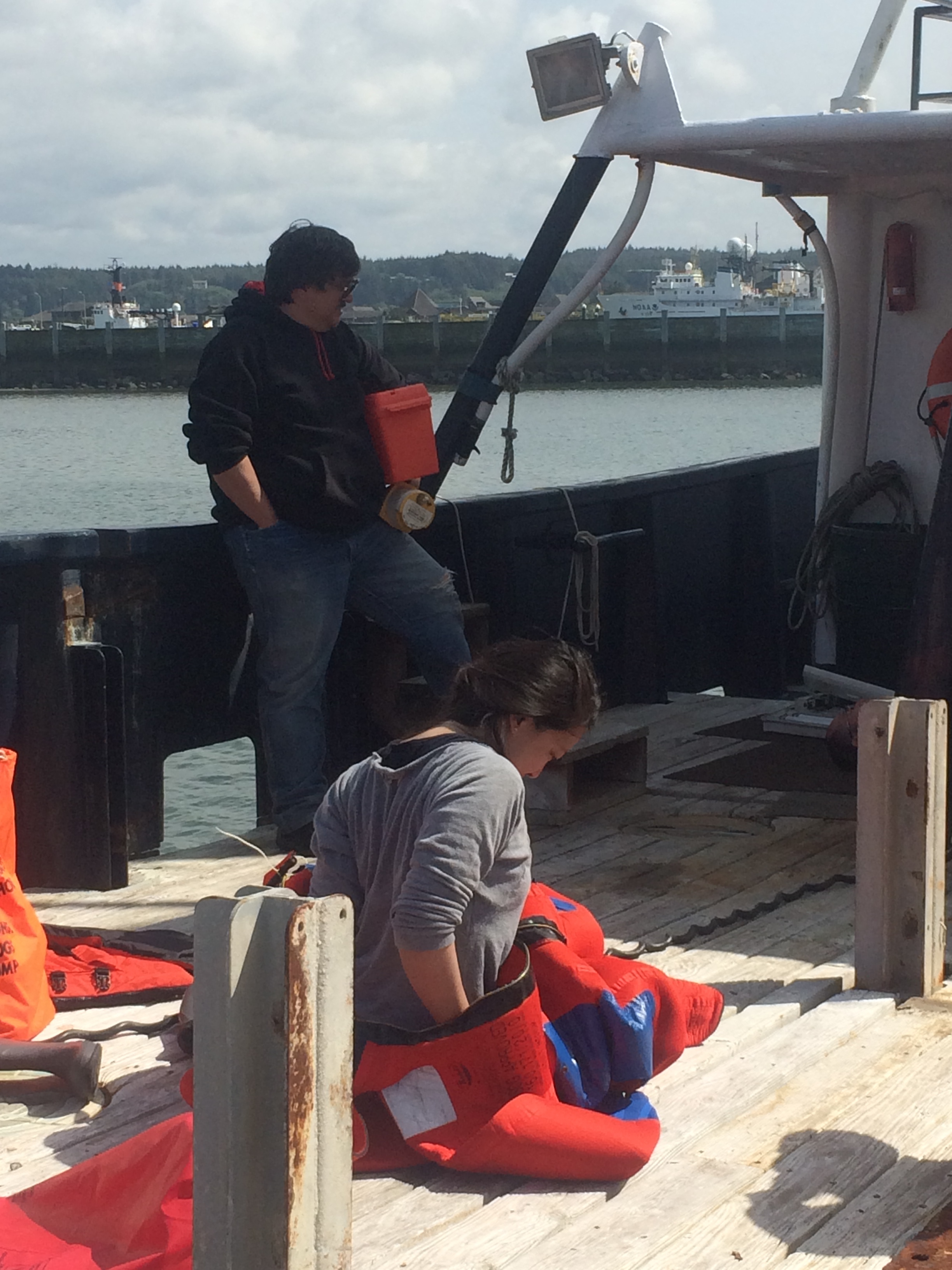
After the demo, we went into the water in our suits, and practiced our safety positions (in case we were being located by helicopter or other boats), and each practiced overturning the life raft in case it deployed incorrectly.
On the final day, we had biological training. We learned about the high-tech equipment we would use out at sea (magnetic strips would send the lengths of the fish to a computer, instead of us having to read and manually record each measurement), the giant multi-ton hauls we would potentially recover (which could supposedly include anything from military and medical waste to fully packed suitcases to sheep and cats), the species we would likely observe (rockfish, chimaeras, skates, urchins, flatfish, sea stars, squid), and then practiced sorting, sexing, and taking otoliths out of a sample of a discarded haul.
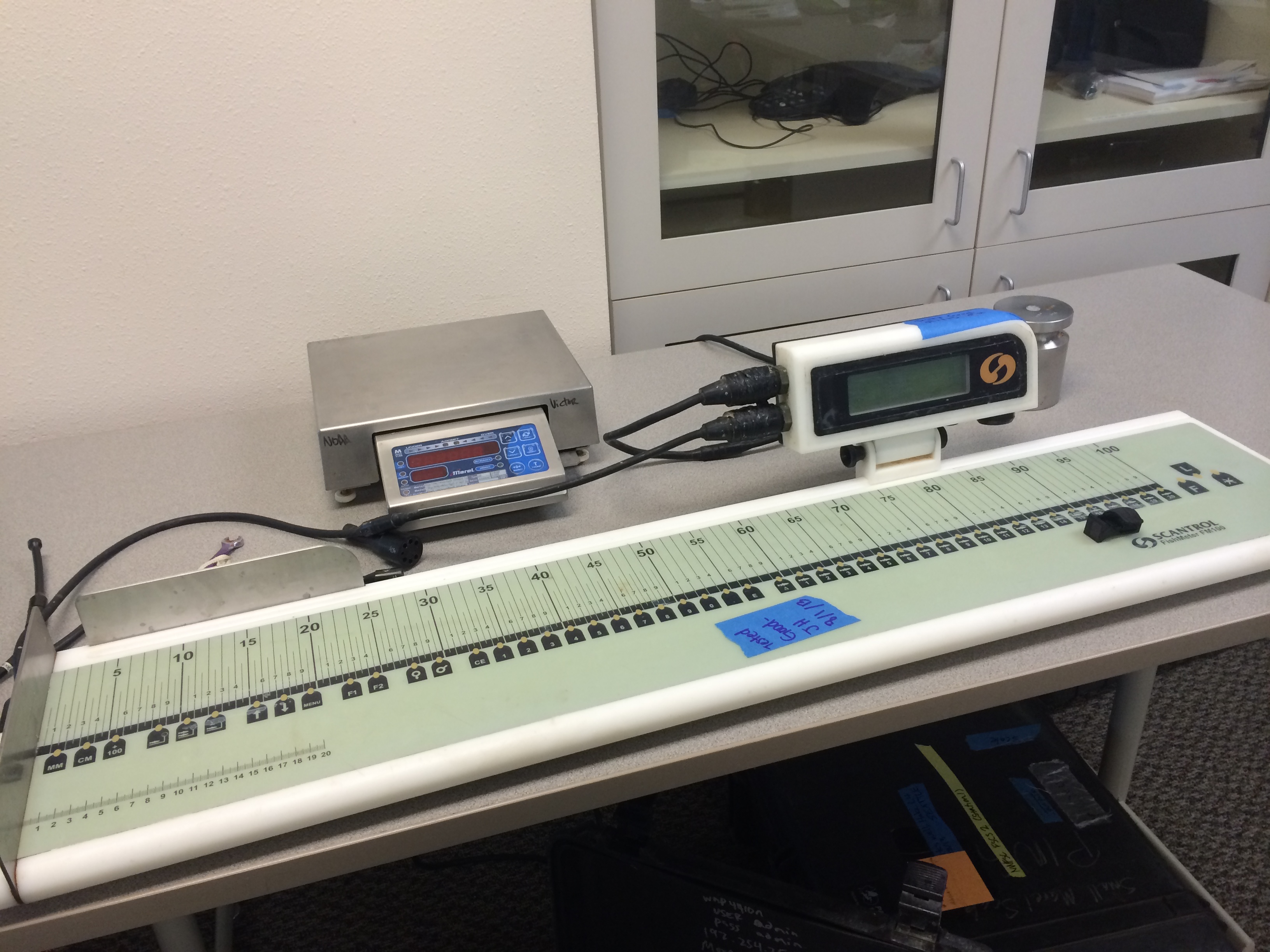
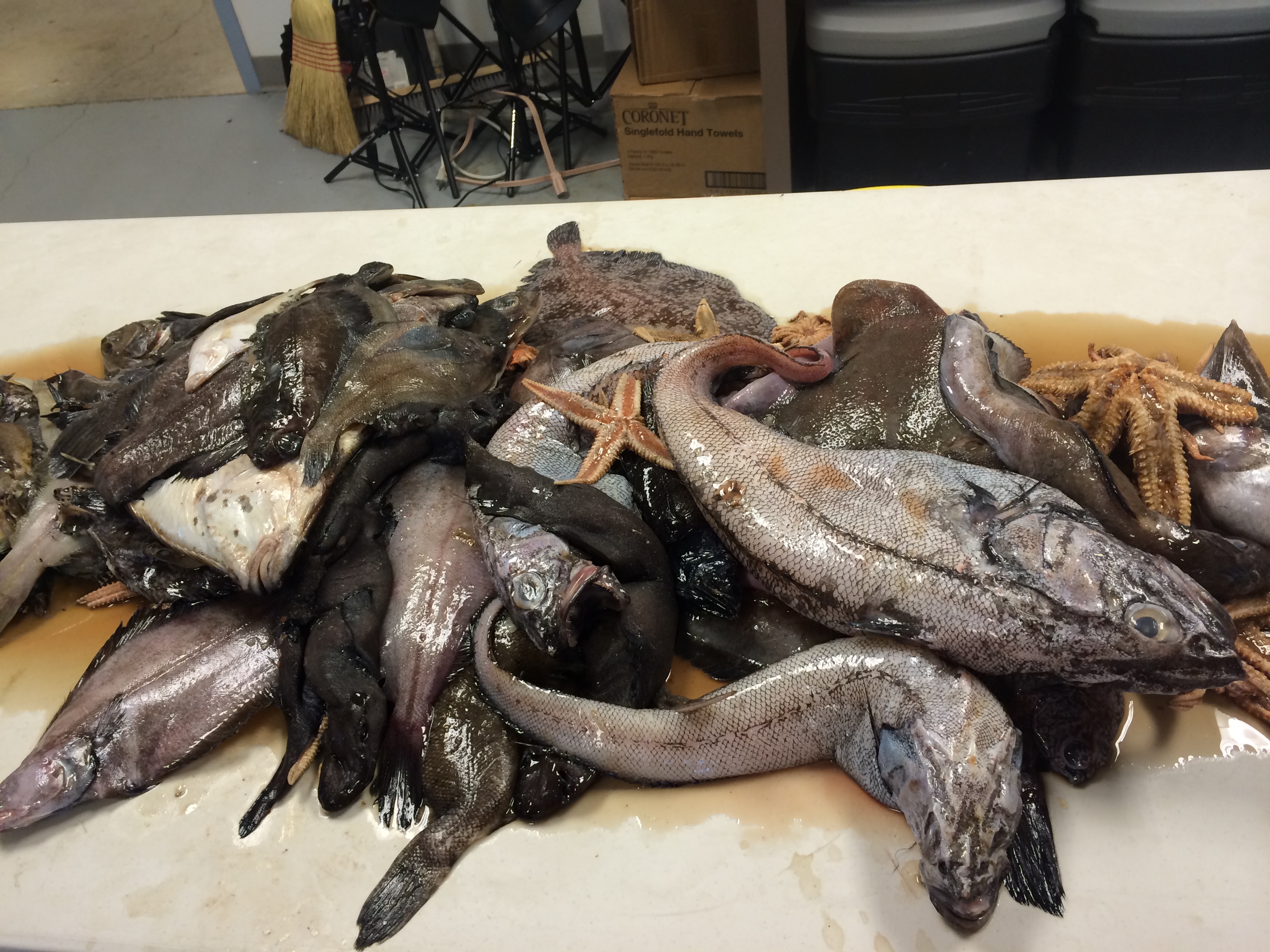
After a long 3 days, we enjoyed some fresh seafood with some fellow scientist-survivors and said goodbye to the beach, knowing that this was only a gentle preview for what was to come in the open ocean. Jessica is currently at sea, traveling in Washington and Oregon, and I won't be deploying until October - hopefully these survival skills will stick until then!

